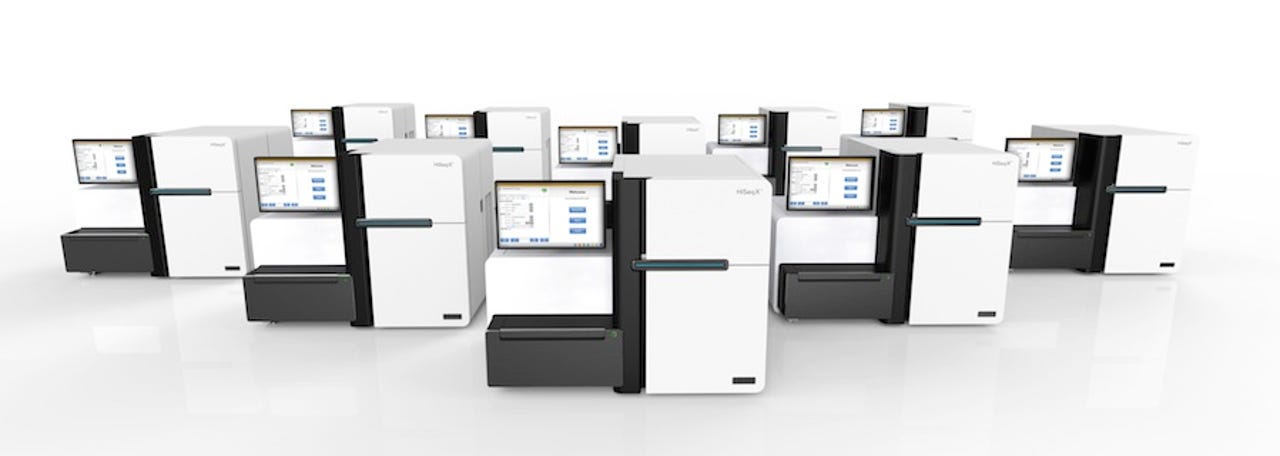Innovation
The $1,000 genome is here
That's what Illumina says. But while your genome could cost just $1,000 to sequence, their HiSeq X Ten will cost $10 million to own. So we haven't entered the "genomes for everyone" era just yet.


This week, San Diego-based Illumina announced the HiSeq X Ten Sequencing System, which the company claims can sequence tens of thousands of human whole genomes in a single year, in a single lab. It’s being hailed as the first sequencing platform to break the $1,000 barrier.
First, why do we even care about a $1,000 genome? The easiest answer if doctors know your genome, it will allow them to customize your treatment -- with the greatest effectiveness and the fewest side effects. From cancer patients to diabetics to newborns, a low cost genome machine could change healthcare forever, and $1,000 is the price at which sequencing can finally go mainstream, Businessweek explains.
But to really understand how genes influence disease so that better drugs and treatments can be developed, scientists might need to sequence millions of people, Nature reports. And that’s no easy task: when the first human genome was decoded 10 years ago, it took 13 years and $3 billion.
Several companies have been racing toward the $1,000-genome milestone, with some announcing that they’re close (but no cigar). So what has Illumina said the HiSeq X Ten will do? Here's the rundown, according to Nature:
- HiSeq X Ten (pictured) is actually a set of 10 of their HiSeq X machines.
- Each HiSeq X is capable of producing up to 1.8 terabases of data -- that’s 16 human genomes' worth -- per three-day run.
- That means HiSeq X Ten can sequence 18,000 human genomes per year. (That’s whole genomes, not just the protein-coding regions.)
- Each genome will be sequenced to the gold standard of 30x, which means that each base will be read by the machine an average of thirty times.
Faster chemistry and better optics, Technology Review explains, have allowed costs to come down. Here’s the breakdown, according to Illumina CEO Jay Flatley: cost of reagents needed to run the machine ($797 per genome), the depreciated cost of the machine itself ($137 per genome), and pay for technicians running machines and preparing samples ($55-65 per genome).
The cost of the system (with all of its 10 machines) is $10 million. It is, after all, meant to sequence tens of thousands of genomes a year. And few customers have the volume of samples necessary to make that investment worthwhile, Nature adds.
The first three signed up are: Macrogen in Seoul, the Broad Institute in Boston, and the Garvan Institute of Medical Research in Sydney. Ship date is this March.
[Via Nature, Tech Review]
Image: Business Wire
This post was originally published on Smartplanet.com